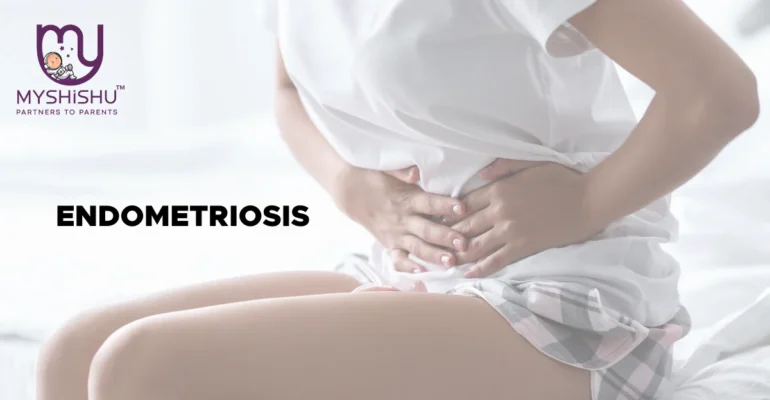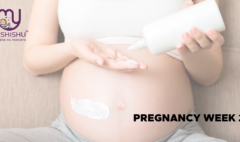Endometriosis & Fertility: A Comprehensive Guide
Endometriosis & Fertility: A Comprehensive Guide
Endometriosis & Fertility, a chronic condition affecting millions of women globally, presents significant challenges for those hoping to conceive. This blog explores the intricate relationship between endometriosis and fertility, addressing common concerns, treatment options, and lifestyle considerations. From the impact of endometriosis on ovulation and fallopian tube health to the role of assisted reproductive technologies (ART) in overcoming fertility barriers, this comprehensive discussion offers insights for women navigating the complexities of infertility associated with endometriosis.
By understanding the interplay of medical interventions, lifestyle modifications, and emotional support, individuals affected by endometriosis can approach their journey to parenthood with resilience and optimism.
Introduction
Endometriosis & Fertility, characterized by the growth of endometrial-like tissue outside the uterus, pose intricate challenges for women desiring pregnancy. Beyond the debilitating pain it inflicts, endometriosis can significantly impact fertility, complicating the path to parenthood. In this blog, we embark on a comprehensive exploration of the nexus between endometriosis and fertility. Delving into the mechanisms underlying infertility in endometriosis, we examine the disruptions in ovulation, fallopian tube function, and the uterine environment. Moreover, we navigate through treatment modalities, from hormonal therapies to surgical interventions and assisted reproductive technologies (ART), shedding light on their efficacy in overcoming fertility barriers.
By empowering individuals with knowledge about managing endometriosis-related infertility, this blog aims to offer guidance and support for those traversing this challenging journey toward parenthood.
Table of Contents
What is Endometriosis & Fertility?
Endometriosis & Fertility, a chronic condition affecting the reproductive system, involves the growth of endometrial-like tissue outside the uterus. This misplaced tissue responds to hormonal fluctuations similar to the endometrium, thickening, and shedding during the menstrual cycle. However, unlike the endometrium, it has no exit route, leading to inflammation, scarring, and adhesions. These disruptions can impact fertility by causing ovulation disorders, fallopian tube damage, changes in the uterine environment, and the formation of endometriomas. Understanding the implications of endometriosis on fertility is crucial for individuals seeking to conceive and navigating the challenges associated with this condition.
When does it occur?
Endometriosis & Fertility typically occur during a woman’s reproductive years, commonly between the ages of 25 and 35. However, it can affect women of all ages, from adolescence to menopause. The exact cause of endometriosis remains unclear, but factors such as genetics, hormonal imbalances, immune dysfunction, and environmental influences may contribute to its development. Symptoms often coincide with the menstrual cycle, worsening during menstruation due to the shedding and inflammation of endometrial-like tissue outside the uterus. Early recognition of symptoms and prompt medical intervention are essential for effectively managing endometriosis and minimizing its impact on reproductive health and overall well-being.
Symptoms and Causes of Endometriosis & Fertility
- Pelvic Pain:
- Severe Menstrual Cramps (Dysmenorrhea): Endometriosis commonly causes intense menstrual cramps before and during periods, often interfering with daily activities.
- Chronic Pelvic Pain: Persistent pelvic pain, unrelated to menstruation, is a hallmark symptom of endometriosis, varying in intensity but typically present throughout the menstrual cycle.
- Painful Bowel Movements or Urination: Endometriosis lesions can affect the intestines or bladder, leading to discomfort or pain during bowel movements or urination, particularly during menstruation.
- Pain During or After Intercourse: Many women with endometriosis experience pain during or after sexual intercourse, known as dyspareunia, which can be deep or sharp and may persist after intercourse.
- Menstrual Irregularities:
- Heavy Menstrual Bleeding (Menorrhagia): Endometriosis may cause heavier-than-normal menstrual bleeding, resulting in prolonged periods and increased discomfort.
- Irregular Menstrual Cycles: Endometriosis can lead to irregularities in the menstrual cycle, including shorter or longer cycles, inconsistent periods, or changes in menstrual flow.
- Spotting or Bleeding Between Periods: Some women with endometriosis experience spotting or bleeding between menstrual periods, which may cause concern and discomfort.
- Gastrointestinal Symptoms:
- Bloating: Endometriosis can cause abdominal bloating, a sensation of fullness or tightness, which may worsen during menstruation or in conjunction with gastrointestinal symptoms.
- Diarrhea or constipation: Changes in bowel habits, such as diarrhea, constipation, or alternating between the two, are common symptoms of endometriosis, especially during menstruation.
- Nausea or Vomiting: Endometriosis-related pain and discomfort may trigger nausea or vomiting, particularly during menstruation or during episodes of severe pain.
- Infertility:
- Difficulty Conceiving: Approximately 30–50% of women with endometriosis experience difficulty conceiving, with distorted pelvic anatomy, impaired egg quality, or disrupted implantation contributing to infertility.
- Recurrent Miscarriages: Women with endometriosis may be at increased risk of recurrent miscarriages, although the underlying reasons for this association are not fully understood.
- Other Symptoms:
- Fatigue: Chronic pain and associated symptoms of endometriosis can lead to fatigue or exhaustion, impacting daily functioning and quality of life.
- Low Back Pain: Some women with endometriosis experience low back pain, which may be related to pelvic floor muscle tension, nerve involvement, or compensatory postural changes.
- Painful Bowel Movements: Endometriosis lesions affecting the intestines or rectum can cause pain or discomfort during bowel movements, which may be accompanied by changes in bowel habits.
Causes of endometriosis:
- Retrograde Menstruation:
- Retrograde menstruation occurs when menstrual blood flows backward through the fallopian tubes into the pelvic cavity instead of exiting the body through the cervix and vagina.
- Endometrial cells present in retrograde menstrual flow can implant and grow on pelvic organs such as the ovaries, fallopian tubes, bladder, or intestines, leading to the development of endometriosis lesions.
- Hormonal Imbalances:
- Estrogen Dominance: Elevated estrogen levels or an imbalance between estrogen and progesterone may promote the growth and proliferation of endometrial tissue outside the uterus.
- Progesterone Resistance: Endometrial tissue in women with endometriosis may exhibit resistance to the inhibitory effects of progesterone, which normally acts to limit the growth and proliferation of endometrial cells.
- Genetic Predisposition:
- Women with a family history of endometriosis are at increased risk of developing the condition, suggesting a genetic component.
- Specific gene variants associated with inflammation, hormone metabolism, cell adhesion, and tissue remodeling have been implicated in endometriosis susceptibility.
- Immune System Dysfunction:
- Dysregulation of the immune system may allow endometrial cells to evade detection and clearance by the immune system, leading to their implantation and growth outside the uterus.
- Environmental Factors:
- Exposure to endocrine-disrupting chemicals found in pesticides, plastics, and personal care products may contribute to the development or progression of endometriosis by disrupting hormone balance.
- Other environmental factors, such as diet, lifestyle, and stress, may also influence endometriosis risk and severity.

Diagnosis and Tests for Endometriosis & Fertility
- Medical History and Physical Examination:
- Your healthcare provider will begin by taking a detailed medical history, including your symptoms, menstrual cycle patterns, and any family history of endometriosis or related conditions. A thorough physical examination, including a pelvic exam, may also be conducted to check for abnormalities or signs of endometriosis.
- Symptom Assessment:
- Your healthcare provider will inquire about your symptoms, including pelvic pain, menstrual irregularities, and infertility. Describing the location, severity, and timing of your symptoms can help guide the diagnostic process.
- Imaging Studies:
- Transvaginal Ultrasound: This imaging test uses high-frequency sound waves to create images of the pelvic organs. While transvaginal ultrasound cannot definitively diagnose endometriosis, it may help detect endometriomas (ovarian cysts) or other abnormalities suggestive of the condition.
- Magnetic Resonance Imaging (MRI): MRI may be recommended in cases where endometriosis is suspected but not detected on ultrasound. MRI can provide detailed images of pelvic structures and help identify endometriosis lesions, adhesions, or deep infiltrating endometriosis (DIE).
- Laparoscopy:
- Laparoscopy is considered the gold standard for diagnosing endometriosis. It is a minimally invasive surgical procedure performed under general anesthesia. During laparoscopy, a thin, lighted instrument called a laparoscope is inserted through small incisions in the abdomen to visualize the pelvic organs directly.
- The surgeon can examine the pelvic cavity for endometriosis lesions, adhesions, and other abnormalities. Tissue samples (biopsies) may be collected for further examination and confirmation of endometriosis.
- Blood Tests:
- CA-125 Test: CA-125 is a tumor marker that may be elevated in women with endometriosis, although it is not specific to the condition. Elevated CA-125 levels may indicate inflammation or other pelvic conditions, but they cannot definitively diagnose endometriosis.
- Other diagnostic considerations:
- Differential Diagnosis: Endometriosis shares symptoms with other gynecological conditions, such as pelvic inflammatory disease (PID), ovarian cysts, adenomyosis, or irritable bowel syndrome (IBS). Your healthcare provider may consider these conditions in the diagnostic process and may order additional tests or imaging studies to rule out other potential causes of your symptoms.
It’s essential to consult with a healthcare provider experienced in diagnosing and treating endometriosis to develop an individualized diagnostic plan tailored to your specific symptoms and medical history. Early diagnosis and intervention can help manage symptoms, preserve fertility, and improve the quality of life for women with endometriosis.
Management and Treatment of Endometriosis & Fertility
- Pain Management:
- Over-the-Counter Pain Relievers: Nonsteroidal anti-inflammatory drugs (NSAIDs), such as ibuprofen or naproxen, can help alleviate pelvic pain and menstrual cramps associated with endometriosis.
- Prescription Pain Medications: In cases of severe pain that is not adequately controlled with over-the-counter medications, your healthcare provider may prescribe stronger pain relievers or muscle relaxants.
- Hormonal Therapies:
- Hormonal Contraceptives: Birth control pills, patches, or vaginal rings containing estrogen and progesterone can help regulate the menstrual cycle, reduce menstrual pain, and suppress the growth of endometrial tissue.
- Gonadotropin-Releasing Hormone (GnRH) Agonists: GnRH agonists work by temporarily shutting down ovarian hormone production, inducing a menopausal state. This can help alleviate endometriosis symptoms, but long-term use is limited due to potential side effects such as bone density loss.
- Progestins: Progestin-only contraceptives, such as the contraceptive implant or intrauterine device (IUD), can help suppress endometrial growth and reduce menstrual bleeding and pain.
- Surgical Interventions:
- Laparoscopic Surgery: Laparoscopy is the primary surgical approach for diagnosing and treating endometriosis. During laparoscopic surgery, endometriosis lesions, adhesions, and ovarian cysts (endometriomas) can be excised or ablated (burned) to alleviate pain and improve fertility.
- Laparotomy: In cases of severe endometriosis or when laparoscopy is not feasible, open abdominal surgery (laparotomy) may be necessary to remove extensive disease or perform more complex procedures.
- Assisted Reproductive Technologies (ART):
- In Vitro Fertilization (IVF): IVF may be recommended for women with endometriosis-related infertility who have not conceived with other treatments. IVF involves retrieving eggs from the ovaries, fertilizing them with sperm in a laboratory, and transferring the resulting embryos into the uterus.
- Intracytoplasmic Sperm Injection (ICSI): ICSI may be used in conjunction with IVF to overcome male factor infertility or to optimize fertilization in cases of endometriosis-related infertility.
- Lifestyle Modifications:
- Diet: Some women with endometriosis find relief from symptoms by following an anti-inflammatory diet rich in fruits, vegetables, whole grains, lean proteins, and omega-3 fatty acids. Avoiding processed foods, excess sugar, caffeine, and alcohol may also help reduce inflammation and pelvic pain.
- Exercise: Regular physical activity can help manage stress, improve circulation, and alleviate endometriosis-related pain. Low-impact activities such as walking, swimming, or yoga may be particularly beneficial.
- Stress Management: Stress can exacerbate endometriosis symptoms, so incorporating stress-reduction techniques such as mindfulness, meditation, deep breathing exercises, or relaxation techniques may help improve overall well-being.
- Alternative Therapies:
- Acupuncture: Some women with endometriosis find relief from pain and other symptoms through acupuncture, which involves inserting thin needles into specific points on the body to promote healing and balance.
- Herbal Supplements: Certain herbal supplements, such as turmeric, ginger, or chasteberry (vitex), may have anti-inflammatory or hormone-balancing properties that could help alleviate endometriosis symptoms. However, more research is needed to determine their safety and efficacy.
It’s essential to work closely with a healthcare provider experienced in treating endometriosis to develop an individualized treatment plan tailored to your specific symptoms, severity of the disease, and reproductive goals. By exploring a combination of medical, surgical, and lifestyle interventions, women with endometriosis can manage symptoms, preserve fertility, and improve their quality of life.
Prevention of Endometriosis & Fertility
While there is currently no surefire way to prevent endometriosis, adopting certain lifestyle habits may help reduce the risk of developing the condition or alleviate symptoms.
- Maintain a Healthy Weight: Obesity has been associated with an increased risk of endometriosis. By maintaining a healthy weight through regular exercise and a balanced diet, you can potentially lower your risk of developing the condition.
- Limit Alcohol and Caffeine Intake: Alcohol and caffeine consumption have been linked to hormonal imbalances and inflammation, which may exacerbate endometriosis symptoms. Limiting your intake of alcoholic beverages and caffeinated drinks may help manage symptoms and promote overall health.
- Manage Stress: Chronic stress can exacerbate endometriosis symptoms by triggering inflammation and hormonal fluctuations. Incorporating stress-reduction techniques such as mindfulness, meditation, yoga, or deep breathing exercises into your daily routine may help alleviate stress and improve symptom management.
- Avoid Environmental Toxins: Exposure to environmental toxins, such as endocrine-disrupting chemicals found in pesticides, plastics, and personal care products, may contribute to the development or progression of endometriosis. Minimizing exposure to these chemicals through lifestyle modifications and environmental precautions may help reduce the risk of endometriosis.
While these lifestyle strategies may not guarantee prevention, they can contribute to overall health and well-being, potentially reducing the risk of endometriosis or alleviating symptoms for those already affected by the condition.
When to seek the health care provider
Seek medical attention if you experience symptoms suggestive of endometriosis, such as severe menstrual cramps, chronic pelvic pain, painful intercourse, or difficulty conceiving. Additionally, if you notice changes in your menstrual cycle, heavy menstrual bleeding, or gastrointestinal symptoms such as bloating, diarrhea, or constipation, it’s essential to consult with a healthcare provider. Prompt evaluation by a healthcare professional experienced in diagnosing and treating endometriosis can help ensure timely diagnosis, appropriate management, and improved quality of life. Early intervention is crucial for managing symptoms, preserving fertility, and preventing complications associated with endometriosis.
Additional common questions
-
Can you still be fertile if you have endometriosis?
Endometriosis can make it more difficult to get pregnant. Between 30-50% of people with endometriosis may experience infertility. The normal chance of getting pregnant each month for people with no endometriosis is approximately 10-20%, while people with surgically documented endometriosis have a chance of only 1-10%.
-
How soon after endometriosis can I get pregnant?
For women with revised American Society for Reproductive Medicine classification of endometriosis (rASRM) stages I and II, spontaneous pregnancy can probably be delayed for up to 24 months, but in patients with rASRM stages III and IV, ART may be considered after 12 months.
-
Can endometriosis affect egg quality?
Conclusions. Severe endometriosis negatively affects ovarian response, oocyte quality, and embryos. However, the fertilization rate is not different among the various stages of endometriosis.
-
What stage of endometriosis causes infertility?
This scoring system correlates with pregnancy success. Women with severe (Stage 4) endometriosis, which causes considerable scarring, blocked fallopian tubes, and damaged ovaries, experience the most difficulty becoming pregnant and often require advanced fertility treatment.
-
Is IVF successful with endometriosis?
In a meta-analysis of 22 studies, Barnhart et al16 reported that the odds of pregnancy in patients with endometriosis undergoing IVF/ET was 50 percent compared to women with tubal factor infertility. The findings of Witsenburg et al17 are in contrast to the previous one.
Conclusion
In conclusion, endometriosis is a complex and challenging condition that affects millions of women worldwide. While there is currently no cure, a multidisciplinary approach combining medical, surgical, and lifestyle interventions can help manage symptoms, preserve fertility, and improve the quality of life for those affected. By raising awareness, promoting early detection, and advocating for comprehensive care, we can empower women to navigate their journey with endometriosis with resilience and support. With continued research and advances in treatment, there is hope for better outcomes and an enhanced understanding of this enigmatic condition. Together, we can work towards a future where women with endometriosis receive timely and effective care.










